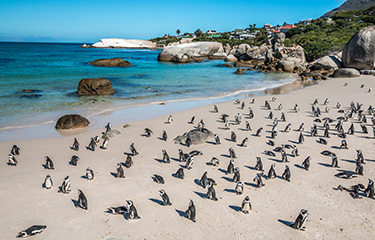South Africa’s Department of Forestry, Fisheries and the Environment has closed areas around major penguin colonies along the country’s coast to commercial anchovy and sardine fishing.
Areas affected include those around Dassen Island, Robben Island, Stony Point, Dyer Island, St. Croix Island, and Bird Island. Purse-seine fishing has been forbidden in False Bay, which hosts the resident Boulders Beach penguin population.
“These restrictions follow prolonged negotiations with the seabird conservation groups and the pelagic fishing industry representatives,” a department statement said.“During the negotiations, both sectors were committed to discussions and offered meaningful contributions from insights into the fishing industry and conservation science.”
The department noted that despite negotiations, the closure, which runs to 14 January 2023, did not represent a consensus position between the two groups.
During the closure period, an international scientific panel will review the situation and study historical data to determine a long-term path forward. A gazette notice calling for nominations to serve on the review panel is scheduled for release by the South African Forestry, Fisheries and the Environment Ministry. Representatives from the fishing and bird conservation sectors, in consultation with the department, have already agreed on the terms of reference for establishing the science review and the panel members.
“The review will advise the department on the value of fishing limitations for penguins’ success, as well as the impacts such limitations will have on the fishing industry,” itsaid.
“South Africa’s sardine stock continues to be at historically low levels, with competition for food thought to be one among a set of pressures that are contributing to the decline of the African penguin population,” the department said. “Other pressures include shipping traffic and the associated noise and vibrations, pollution, and degradation of suitable nesting habitats through historic removal of guano and coastal commercial and residential developments.”
Official records indicate the species, which is endemic to South Africa and Namibia, “has decreased from more than a million breeding pairs to just about 10,000 pairs over the last century.”
Photo courtesy of Pocholo Calapre/Shutterstock





















Discussion about this post